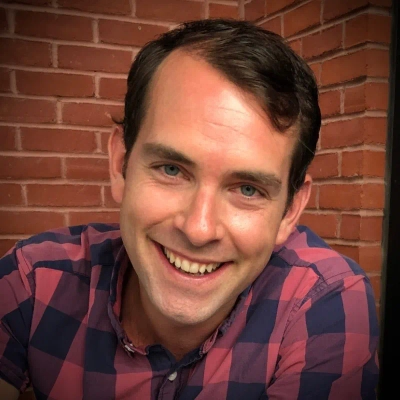How Business Coaching Enhances Goal-Setting Skills for Leaders
Business coaching offers proven strategies to enhance leadership goal-setting, with experts highlighting the importance of clear metrics and systematic approaches. Top professionals recommend breaking large objectives into manageable deadlines and creating dedicated time for strategic initiatives to maximize effectiveness. The article examines how balancing measurable targets with emotional purpose drives better results, featuring insights from seasoned coaches across various leadership disciplines.
Divide Days Into Productive Time Slots
One valuable lesson I learned from a business coach was to divide the days and weeks into productive, incremental time slots. Setting obtainable goals in smaller subsets of the day helps to build momentum, stay on track, and generally get more things done while avoiding burnout. This structured approach transformed how I set and track goals by creating clear milestones and accountability checkpoints. This is particularly helpful when working remotely or in a less-structured environment as it helps build that productive framework into your work routines around other duties and priorities. To commit fully, block off sections of your calendar for these purpose-driven time slots and outline your top priorities for that distraction-free period. I find it helps to use a visual project management tool like a Kanban board to digitally organize these objectives and then drag them into the calendar when preparing to tackle them.

Set Goals That Stretch Not Break
One of the best lessons I learned from my business coach early on was to set goals that are achievable, but feel slightly uncomfortable.
In my first year of business, I had generated $108,000 from two launches. I knew I had a system that worked and I could scale.
My instinct was to set my next goal at $300,000. But my coach challenged me to think bigger and go for a $1 million launch. It felt uncomfortable, but not unrealistic, given that I had a proven process. And, I knew I could cover the losses if I fell short - my business wasn't at risk.
Ultimately, I earned $800,000. It was below the $1 million mark, but far beyond what I would've achieved with my original goal.
That experience taught me to always set goals that stretch me without being delusional. It's how I grow without triggering self-sabotage.

Build Feedback Loops Into Every Goal
A business coach once told me that every goal should have a built-in feedback loop. It's not enough to set a target and a deadline (you need a clear way to measure progress and adjust along the way).
I started pairing each goal with a weekly metric review, such as tracking demo-to-close ratios or cost per lead. It made big objectives feel more achievable because I could identify small issues before they grew into major obstacles.
That mindset shift helped me see goals as living systems rather than fixed outcomes. It keeps momentum high and makes progress far more consistent.

Convert Goals Into Weekly Operating Systems
The best lesson I ever learned about goal-setting didn't come from a productivity book—it came from a business coach who called me out. He said, "Your goals are outcomes, not plans. Show me your weekly rhythm, not your ambition." That hit hard. Like many entrepreneurs, I was setting big quarterly goals and then wondering why momentum stalled midway through. The problem wasn't effort. It was structure.
He taught me a simple framework I still use with every client today: convert every big goal into a weekly non-negotiable system. Revenue is not a goal—revenue is a result. Hiring is not a goal—consistent recruiting is. Brand growth is not a goal—publishing with discipline is. When I stopped asking "What do I want?" and started asking "What will I repeat every week?" everything changed.
For example, instead of setting a vague sales target like "Close $200K this quarter," we defined a weekly operating system: 15 outbound relationships started, 5 discovery calls booked, 3 proposals sent. Suddenly, progress became measurable and failure became obvious—not at the end of the quarter, but by Wednesday afternoon. That rhythm is what creates wins, not motivation.
The biggest shift was this: I stopped treating goals like events and started treating them like habits at scale. Now every strategic goal gets an operating cadence before we ever announce it to the team. No cadence, no goal. This one mindset shift reduced overwhelm, improved accountability, and turned big goals into predictable execution.
Dreams don't drive results. Systems do. If your goals don't have a cadence, they're just wishful thinking.
Block Time Weekly For Strategic Projects
My business coach had me block out time each week for the big projects, not just the urgent stuff. It's crazy, I thought I was doing strategic work, but my whole week was actually getting swallowed by emails and putting out fires. Now I protect Tuesday afternoons for that one big quarterly goal, and it's finally moving. If you manage a team, try this. The important stuff stops getting pushed out by the daily noise.

Treat Goals As Experiments Not Targets
A coach once told me to treat my goals like experiments. That single idea changed how I build and scale businesses. I used to set goals as rigid targets, assuming success meant hitting them perfectly. Now, I see each goal as a hypothesis, a test of strategy, timing, or market fit. This mindset invites flexibility and learning, which is crucial in fast-moving industries like tech and marketing.
When we treat goals as experiments, the focus shifts from perfection to progress. In product development or brand growth, I set checkpoints to review what is working and pivot where needed. It is not about scrapping a plan when it changes; it is about refining it with real data and insight. That approach keeps innovation alive, especially in uncertain markets where adaptation is the true competitive edge.
This lesson improved my goal-setting process by embedding agility into every project. I encourage the startups I advise to do the same, define success metrics, but leave room to learn and evolve. You do not just achieve goals; you build frameworks for continuous improvement. Over time, this mindset compounds, turning short-term tests into long-term mastery.

Set Goals For Present Self Not Future
One of the most useful things a business coach ever told me about goal-setting was: "Don't set goals for your future self — set them for the person you are right now."
It sounds simple, but it flipped how I approach everything. Most goal-setting frameworks assume a version of you that's perfectly disciplined, rested, and emotionally neutral. But the person doing the work day-to-day isn't that ideal self — it's the tired, distracted, occasionally overwhelmed one. The version that checks Slack too much and sometimes second-guesses decisions.
So instead of designing goals around an aspirational self, I build them around what's realistic for current me. That might mean cutting a project in half, breaking it into two clean milestones, or preemptively baking in margin for chaos. Funny enough, once I started doing that, I actually hit more ambitious goals — because they were designed for how I actually operate, not how I wish I did.
It's one of those paradoxes that makes you rethink what "effective" really means. A goal doesn't have to be heroic to be transformative — it just has to be human enough to stick.

Prioritize Tasks With Highest Business Impact
The single most valuable goal-setting lesson I learned from a business coach, which I still rely on for time management, is the necessity of ruthless prioritization based on high impact—what many call identifying your Most Important Tasks (MITs). It's not enough to simply list tasks; the goal must be connected to the few activities that genuinely move the business forward, not just keep you busy. This clarity forces you to stop equating a long to-do list with actual progress.

Create Space For Reflection After Milestones
My business coach showed me that goals lose value without emotional resonance and reflection space. He emphasized pausing after every milestone to evaluate lessons rather than rushing ahead mechanically. This practice strengthened resilience and allowed deeper understanding of success beyond revenue growth statistics. It also revealed that growth without gratitude often creates burnout instead of satisfaction. We learned to measure well-being alongside performance as a sign of maturity.
Implementing this philosophy improved retention and engagement because people felt seen beyond deliverables and deadlines. Reflection turned into strategic foresight improving decision-making across unpredictable healthcare supply cycles. Each goal now closes with a learning summary capturing wisdom for future teams. This ritual transformed success into a living system of continuous renewal and learning. Leadership evolved into stewardship of purpose through disciplined reflection and emotional intelligence.

Break Large Goals Into Micro Deadlines
A business coach taught me the power of micro-deadlines when we redesigned Nature Sparkle's custom consultation process. Instead of giving our design team a standard 14-day turnaround for engagement ring concepts, we broke it into 3-day checkpoints: initial sketch by day three, CAD rendering by day six, final revisions by day nine. This shift increased our on-time delivery rate from 67% to 91% within four months. The improvement came from eliminating last-minute rushes and catching design issues early. Our customer satisfaction scores jumped from 78% to 93% because clients received regular updates instead of waiting anxiously. Breaking larger goals into smaller, measurable milestones creates accountability and momentum. Each checkpoint gives your team clear targets and reveals obstacles before they derail the entire timeline. This approach transformed how we manage everything from sourcing ethically certified diamonds to coordinating with our craftsmen.

Track Each Offering Individually For Growth
I used to track all my dog training programs as one big lump until a business coach asked me why. So I separated the data for obedience classes and therapy dog training. Suddenly I could see the therapy program needed more marketing, while the obedience class was getting too crowded. I shifted some ad spend, and both programs grew. Owners were happier, too. Look at your offerings individually. You'll find growth you didn't know was there.
Base Goals On Personal Desires Not Pressure
A business coach taught me to establish goals based on personal desires instead of external pressure which became a life-changing discovery. The entire approach shifted after that. I began creating content based on my desired emotional state which included creativity and freedom and meaningful connections with authentic women.
The approach became more natural while maintaining its direction. Your goals based on authentic desires will guide you toward progress instead of exhausting you.
Conduct Pre Mortems To Prevent Failure
From a coach, I learned the value of conducting pre-mortems for goals. Instead of waiting to assess failure afterward, I was encouraged to imagine in advance why a goal might fail and how to prevent it. This approach shifted my focus from reaction to preparation and made planning more intentional. It taught me to view challenges as opportunities to strengthen strategy rather than setbacks to recover from.
On the land, before setting new cultivation targets, I now visualize potential issues such as drought, supply delays or unsuitable species. By identifying these risks early, I can design contingencies that keep projects stable and productive. This mindset has improved both efficiency and resilience in my work. I now apply a pre-mortem to every major goal, ensuring that each decision is thoughtful, adaptable and guided by foresight.

Make Goals SMART With Clear Metrics
One key lesson I learned from a business coach about setting effective goals is the importance of making goals SMART—Specific, Measurable, Achievable, Relevant, and Time-bound. Initially, I would set broad or vague goals like "grow revenue" or "improve customer satisfaction," which lacked clear direction and made it difficult to track progress.
The coach helped me shift to setting goals that were both actionable and measurable, breaking them down into clear steps with specific timelines. For example, instead of "grow revenue," I began setting goals like "increase monthly sales by 15% over the next quarter by improving our lead generation process."
This approach has dramatically improved my goal-setting process by making it easier to stay focused, prioritize actions, and monitor progress. With clearer targets and deadlines, I can make adjustments along the way, stay accountable, and better align my team's efforts. It's helped me set goals that feel more attainable and connected to the broader vision, leading to more consistent progress.

Build Goals With Your Team Not Alone
A business coach once told me to stop setting goals in isolation and start building them with my team. At first, I thought goal-setting was something leadership handled privately and then shared afterward. But once we began involving our technicians and office staff in setting quarterly targets, everything changed. They started bringing up ideas we hadn't considered — like adjusting service routes or improving how we handle callbacks — and those small insights made our goals more realistic and effective.
Now every major goal goes through a team discussion before it's finalized. That approach has created more ownership and accountability across the board. People work harder toward goals they helped shape, and the collaboration keeps us focused on what actually moves the business forward, not just what looks good on paper.

Focus On Clarity Over Goal Volume
One thing my business coach taught me that completely changed how I set goals was to focus on clarity over volume. Early on, I used to write long lists of goals—everything from growing routes to improving equipment to expanding into new cities. It looked great on paper, but it left me scattered. My coach sat me down and said, "If everything's a priority, nothing is." He challenged me to pick three specific, measurable goals each quarter and build every decision around those. The first time I tried it, we set one clear goal: improve customer retention by 10%. It gave the whole team direction, and we hit it within six months.
That shift taught me that discipline is just as important as ambition. Now, whenever we set goals at Rowland Pest Management, we ask, "Is this clear enough that everyone on the team knows exactly what success looks like?" That simple filter keeps us from chasing too many ideas and helps us track real progress. It's made our meetings sharper, our team more aligned, and our results a lot stronger. Fewer goals—but the right ones—have done more for our business than any long list ever did.
Set Milestone Celebrations Throughout The Journey
My business coach taught me to always set what he called 'milestone celebrations'--specific rewards tied to achieving each major goal step, not just the final outcome. When I was scaling We Buy Any Vegas House, I'd celebrate closing my first 10 deals of the quarter with a family dinner, or hitting 50 offers with a weekend getaway with my wife and girls. This approach kept me energized through the grind of analyzing hundreds of properties and making countless offers, because I wasn't just grinding toward some distant target--I was earning meaningful breaks that recharged me for the next push.

Write Goals Using Simple Everyday Language
One thing a business coach hammered home for me was the importance of clarity--actually writing down my goals in simple, everyday language, as if I was explaining them to my kids. When I wanted to double our monthly deals at Fast Vegas Home Buyers, instead of fancy business terms, I wrote: 'Help more Las Vegas families sell their homes quickly and easily.' Getting that clear kept my focus razor-sharp and made it a lot easier to share the mission with my team and stay accountable.

Segment Goals By Specific Client Types
I used to have one big sales goal, and it never really worked. A coach told me to break it down by client type. So I set separate goals for first-time homebuyers, investors, and sellers. Suddenly my team knew who to call and what to say. We stopped having those up-and-down months, and more deals closed. If you manage a sales team, try this. It just makes everyone's focus so much clearer.
Pair Measurable Targets With Emotional Purpose
A business coach once told me, "Every goal needs a finish line you can see and a reason you can feel." That idea changed everything about how I plan. It pushed me to pair each measurable target—like securing a specific number of funded projects—with an emotional anchor, such as improving access for underrepresented organizations. The balance between outcome and purpose keeps motivation steady when metrics alone lose meaning.
Applying that approach made goal-setting less about task lists and more about alignment. Each quarter, our objectives now include both quantifiable milestones and a written statement of why they matter. This structure filters out distractions disguised as opportunities. Progress feels clearer because it connects growth to mission, not momentum. It turned performance reviews from checking boxes into reaffirming values, which made the process more grounded, human, and sustainable.

Create Empathy Driven Goals For Better Results
My business coach taught me to set 'empathy-driven' goals--for every business target, I include a specific objective focused on understanding the homeowner's perspective. When we set a goal to increase acquisitions, I also commit to having 20 heartfelt conversations with sellers monthly about their unique challenges, which ensures our growth stays rooted in solving real problems and has transformed our goal-setting into a more compassionate, effective process.

Combine Operational Goals With Client Experience
A coach taught me to always pair an operational goal with a client-experience goal, a lesson that's been fundamental to how we operate at Highest Offer. For instance, instead of just targeting 'X number of property acquisitions,' we'll frame it as 'acquire X properties while maintaining a 95% client satisfaction score.' This simple shift ensures that as we scale our marketing and acquisitions, our core mission of putting the client first remains the measure of our true success.

Establish Decision Filters For Each Goal
The most transformative advice from my business coach was to create what he called 'decision filters' for each goal--three non-negotiable criteria that every action toward that goal must satisfy. As a military veteran turned real estate investor, I've applied this to every house purchase at Integrity House Buyers by asking: Will this help the homeowner solve a genuine problem? Can we add real value to this property? Does this maintain our reputation for integrity? This approach has streamlined my decision-making process and kept our business aligned with my core values, especially when evaluating multiple opportunities in challenging markets like Clarksville.

Include Failure Checkpoints In Your Plans
My business coach taught me to always include a 'failure checkpoint' in every goal--essentially planning what I'll do if I'm not hitting my target by the halfway mark. For example, when setting our quarterly property acquisition goals at Cape Fear Cash Offer, I build in a mid-quarter review where I assess if we're on track, and if not, I have pre-planned adjustments like increasing our marketing spend or reaching out to additional wholesalers. This has completely changed how I handle setbacks because instead of panicking when things don't go as planned, I have a roadmap to pivot quickly and still finish strong.
Use Activity Based BHAGs Over Binary Goals
Goals can be very "binary" by design. Either you hit them or you don't and if you don't hit them it can be very demoralising. My coach encouraged me to use BHAGs (Big Hairy Audacious Goals) based on activity instead of results instead. For example, rather than trying to record a YouTube video every week he suggested setting a BHAG of recording 30 videos over the course of the year. It means you're not tied to doing one a week, but if you record them all in the first week you've achieved your goal and also gives you bandwidth to stretch the goal to 35, 40 or even 50 videos in the year once you've achieved your BHAG. No disappointment, just a big achievement!








